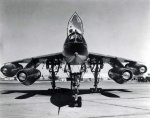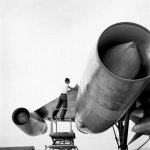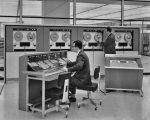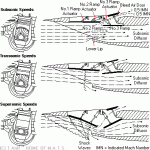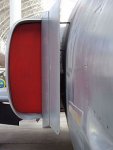Are you saying that the engines would shut down in flight?
I took a look through my write ups on the SR-71. I found at least one bird, Tail number
64-17952 that was lost due to "An inlet scheduling malfunction, followed by an Unstart, on the right engine while in a 30 degree bank at 80,000 feet, and at Mach 3+". The aircraft broke up. Both pilot and RSO escaped the aircraft, but the RSO was found dead after parachuting to the ground.
The accident happened on 25 Jan.-1966, near Tucumcari, New Mexico. Pilot was Bill Weaver, the RSO was Jim Zwayer. For a detailed description of the event, read
Lockheed SR-71, The Secret Missions Exposed, by Paul F. Crickmore. If you want to find out more about what an unstart is, and how the Lockheed company managed to fix the problem, Creekmore's book is the last word. Detailed description of who, how, what and pictures to go with it. My copy is dated, there has been at least one update.
What many people don't know, is that the SR-71 is the descendant of the A-12. The A-12 was a single seater. Had an incredible camera in it, that was designed by Eastman Kodak, just for the A-11 project. At first look, the planes are very similar. But upon closer inspection, there are some differences. Again, if you want to read about it, there are 15-20 good books to chose from, but Creekmore's book has to be the best. And yet, the documents I got from the CIA, through the FOI request I made, still had a thing or two that wasn't in the book! Very interesting!!
Some fun facts. Titanium, the material used to produce these fantastic birds. The world's largest producers are Russia, and South Africa. The United States had to acquire almost the entire amount of this metal, from those two countries, without letting anyone know what it was for. I bet the Russians could still scream about that.
During both projects, A-12 and SR-71 development, a problem developed with metal fatigue. BUT, strangely enough, it seemed to be caused by different location of part manufacturing. Many parts were made in California, and other parts on the East Coast. The manufacturing prosses was the same, in both facilities. So what could it be? Some people even suggested sabotage. After much studying of failed, and non failed parts, a smart guy decided he knew the answer. Fluoride. Yep, like in toothpaste. It seems that California was one of the first states to put fluoride in the drinking water. Water was used in the machining process to clear away metal filings and other debris. Titanium reacts with fluoride, and it weakens the metal! So all the machine shops in California had to use non fluoridated water, to correct the problem.
The tensile strength of titanium on the A-12's and SR-71's got higher, due to repeated heating, from high Mach flights.





